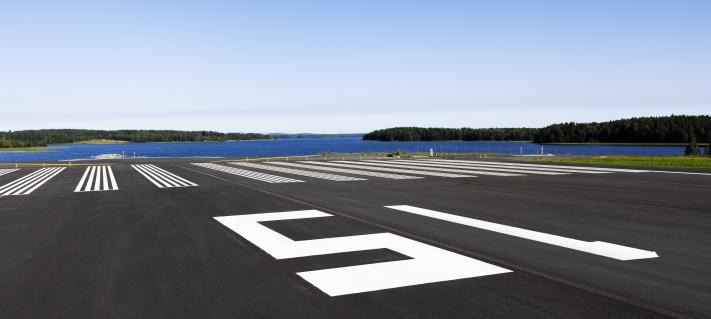Many passengers are familiar with how much more convenient it is to board or disembark from an airplane straight through to the terminal using a passenger boarding bridge without bus rides on the apron.
From the airport's point of view, it also makes sense to cut down on bus rides, which usually require more time and resources. That's why Helsinki Airport uses passenger bridges for boarding and deboarding whenever possible.
The new MARS bridge solution, introduced this autumn in Helsinki Airport’s new West Pier, will significantly decrease the need for apron buses.
“With these two MARS bridges, we can simultaneously accommodate either two small narrow-body planes or one large widebody aircraft that can be accessed via two entrances. In the latter case, one tunnel leads to business class, the other to the economy class door,” says Heini Noronen-Juhola, Deputy Director of Helsinki Airport.
A faster start for morning flights
The MARS bridge solution provides flexibility for the use of gates in the non-Schengen area, which serves long-haul flights and, for example, flights to the UK or Russia.
“During the afternoon rush, there will likely be one big plane on all the bridges, but, in the mornings, we can use the new bridges for narrow-body aircrafts when smaller planes arrive at and depart from Helsinki Airport. With this new solution, more small aircraft can board and disembark through passenger bridges, which will speed up arrival and departure, especially for morning flights,” explains Noronen-Juhola.
Schengen flights, such as to Paris or Rome, will continue to use conventional passenger bridges.
Increased efficiency for airlines
Altogether, four aircraft stands in Helsinki Airport West Pier will make use of the MARS bridge solution.
“Double bridges are quite a typical solution at big airports. Often, business and economy classes are boarded though their own bridges. This was a good time to implement the solution at Helsinki Airport, as we are building a new terminal,” says Noronen-Juhola.
Double bridges can also benefit airlines. “It speeds up boarding and disembarkation, as well as aircraft turnaround, which improves airline efficiency.”
Collaboration with airlines and ground handlers
The bridges were designed and developed in cooperation with airlines and ground handlers responsible for attaching the bridges to the planes and boarding passengers.
“For small aircraft, airlines use these bridges just as before. For large planes, they have the choice of using one or two bridges for boarding. If a wide-bodied aircraft is boarded through two bridges, it may require airlines to take on another staff member, which means alterations in their processes.”
All new aircraft stands at the South and West Piers can accommodate a MARS bridge solution, but deployment will depend on how much it is needed. “We believe that the solution is a win-win. In general, passengers like to board and disembark via bridges rather than buses, and the airline and airport processes speed up.”



